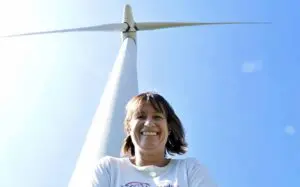While the COP26 climate summit at the end of last year could best be described as underwhelming, one positive to emerge was an agreement on Article 6 of the Paris Agreement, which clarifies the rules concerning the creation of a government-led international carbon market.
Despite the absence of a global, regulated market to date, Australia has already made significant headway with creating its own carbon market. This came after the Coalition government came into power with the promise of axing Labor’s emissions trading scheme.
According to the Clean Energy Regulator, demand for Australian Carbon Credit Units (ACCU) hit a fever pitch earlier this year with a record 1.6 million ACCUs traded in the March quarter. This was an increase from under 1 million ACCUs in the same period last year.
The development of an internationally regulated market is good news for Australia’s thriving carbon sector. Not only does the agreement legitimise Australia’s own market, it also increases the scrutiny on the quality of offsets.
In theory, our market can more closely align with global regulations over time, which should bring much needed quality and scale to carbon offset initiatives and accelerate the overall decarbonisation efforts.
However, how can businesses leverage offsetting as a strategic tool to achieve Net Zero?
Setting the record straight
If done correctly, offsetting can be a strategic tool for companies that are aiming for carbon neutrality because it unlocks ambitious, short-term actions.
These actions are not a panacea, because there will always be a long-term need to decarbonise through technology. However, for the interim or hard-to-abate sectors, nature-based solutions and carbon offsets do have significant, near-term roles to play.
There is also scientific consensus that supports the use of high-quality carbon offsets, avoidance, and removals to neutralise residual emissions that have not yet been reduced by other means.
With that said, there are criticisms levelled against offsetting, that claim it to be an excuse for organisations to continue with activities that produce emissions.
However, new standards delivered by the Science Based Target initiative (SBTi) provide companies with a roadmap to align Net Zero plans with science.
According to these standards, carbon offsetting can only be implemented by organisations to offset residual emissions once they have undertaken deeper emissions cuts. The onus, therefore, remains on organisations to first reduce emissions via other levers before considering carbon offsets.
However, to realise the full potential of offsetting, businesses need a disciplined, strategic approach in three key areas: timing, quality, and procurement.
Timing is everything
Offsetting early allows organisations to immediately tackle greenhouse gas emissions generated within their operations or supply chains, especially if there is no direct control over the emissions or the ability to decarbonise immediately. It is, however, critical to pilot and invest in other decarbonisation levers together with this offset strategy.
Choosing the timing of offsetting is hence related to an organisation’s ability to immediately take action on decarbonisation levers.
For instance, hard-to-abate sectors should strongly consider nature-based offsetting as one of the first ports of call, while other sectors with a clearer path to decarbonisation should consider offsetting only after exploring other available decarbonisation-enabling technologies.
Quality is critical
When organisations get involved in procuring offsets and using them to achieve emission reduction targets, they need to be careful about what offsets are being purchased and whether they’re credible — but how can an organisation tell a good quality offset from a bad one?
Organisations need to check if credits are quantifiable by using recognised measurement tools against a credible baseline. They should be independently audited, and the benefits from reductions must be irreversible. Furthermore, offsets purchased should provide socio-economic benefits for local communities.
The Article 6 agreement from COP26 focused on quality issues, such as prevention of double counting. This is critical to ensuring the success of offsetting efforts towards real carbon abatement. As global regulations come into effect after the agreement, it should be much easier for organisations to ascertain the quality of an offset.
Moving from tactical to strategic procurement
Organisations can either buy or generate offsets by choosing from four options: trade, purchase, develop, or fund. Offsets can always be bought in the secondary market or from a project owner.
However, a more strategic approach is to generate projects internally through joint ventures or by investing in offset initiatives with other companies.
Companies that develop or fund their own projects are more likely to maximise economic, social, and environmental value in the long-term. This approach should also allow the company to adapt to changing market trends, regulations or requirements from different climate standards that organisations choose to follow.
Thanks to one of the few small victories to emerge from the climate summit last year, organisations will soon be able to operate within a more regulated global carbon market. However, just purchasing offsets en masse is not the silver bullet to decarbonisation. Instead, it is but one of many tools that can be leveraged.
Organisations need to base their offset strategy on their emissions profile, decarbonisation levers, and business strategy. If done correctly, not only will they accelerate towards their own decarbonisation goals, but it will also help to build a trustworthy market for offsets, which in turn contributes to the global push towards Net Zero.
Josh Martin is the Senior Director of ENGIE Impact, which brings together a wide range of strategic and technical capabilities, to provide a comprehensive offer to support clients in tackling their complex sustainability challenges from strategy to execution.









